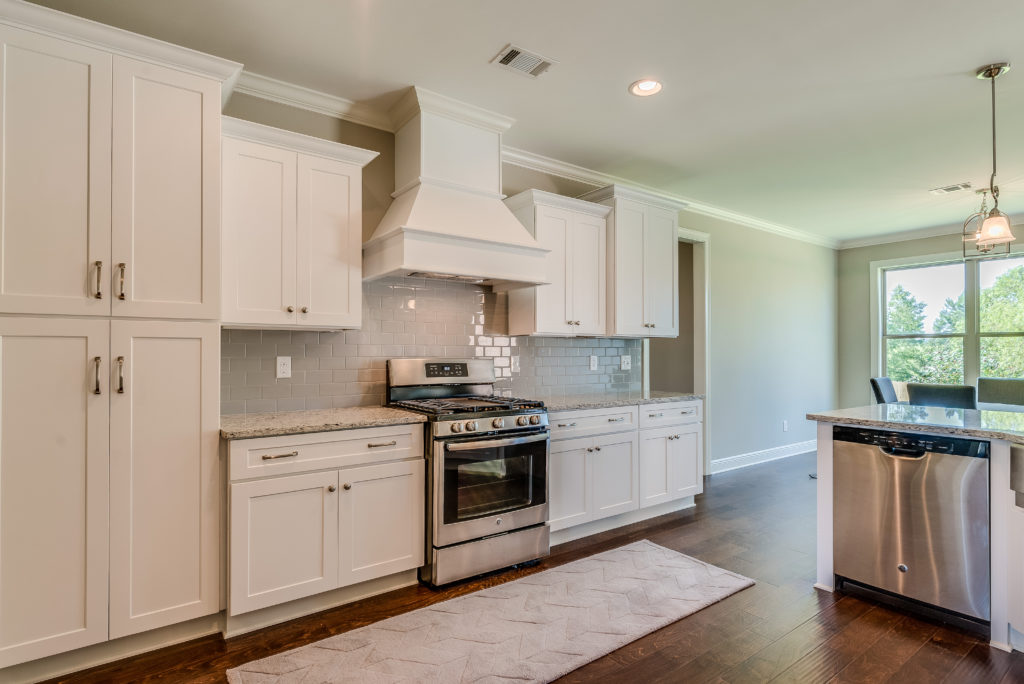
If you’re in the middle of a kitchen remodel or planning to update some old appliances to better suit your kitchen layout, one item you shouldn’t neglect is a range hood. Also referred to as a vent hood, it’s oftentimes an overlooked aspect of a kitchen’s functionality and design.
Range hoods come in a variety of materials, configurations, styles, and finishes, and depending on the layout of your cooking space, you’ll have the option to install your hood under your cabinetry or directly above your stove.
Regardless of the range variety you eventually decide on, it must meet your ventilation needs and accomplish what it was equipped to do. If you’re eager for a breath of fresh air, read on to discover the different types of range hoods and the unique features that will make your culinary space stand out.
1. Under-Cabinet Range Hoods
One of the more common and compact options for range ventilation is the under-cabinet hood. This sort of range hood is mounted underneath the cabinets that are positioned directly above your stove. The design of the required venting system is simple for the most part and versatile enough to be able to go with any kitchen style.
In order to provide ventilation, the ductwork for the hood is either placed behind the hood out of an exterior wall or up through the cabinet above the hood. This can take away any storage you may want to utilize in your cabinet, but for the most part, this type of hood does end up saving a little bit of wall space.
2. Downdraft Hood
These try to reverse the direction of rising smoke and fumes and exhaust them through ducts running beneath the floor. Our past tests found they were among the least effective at removing smoke and steam. While they can be used anywhere in the kitchen, their main application is in islands where it might not be possible to route ductwork through the ceiling.
3. Island or Ceiling Mounted Range Hoods
Kitchens that have a range located on an island or not against a wall may need to be paired with an island or ceiling-mounted hood. For larger, professional-style cooktops, a ceiling-mounted hood can handle the extra output that may come along with additional cooking burners and tools.
Like a wall-mounted hood, this type of venting device can add a unique look to your space. Some designs come in a selection of modern materials such as copper, glass, or even ceramic–all beautiful options for different kitchen design themes. In order to keep the sightline through the kitchen from being blocked by the range hood, some contractors may choose to install this variety of hood a bit higher than other types. To keep up with the demands of your stove’s exhaust, you may need to purchase a larger capacity island range hood.
4. Ductless Hoods
This is typically an option on some hoods, whether under-cabinet, wall, or island. This type of installation directs steam, heat, and smoke away from the stovetop, but back into the kitchen. Its main filters can trap oil and grease droplets dispersed into the air above the range, and in most cases, an optional carbon filter is available to reduce odors. We do not recommend a ductless hood, as it will take the smoke and odors being generated by the stove and disperse them throughout the kitchen and the rest of the home.
5. Insert Hoods
An insert hood or a cabinet insert hood provides a customized approach for a modern kitchen design. It can be installed within the cabinetry above the stove or cooktop. It comes with the standard range hood features such as blowers, speed controls, and lighting systems, but does not come with a fully functional ventilation system like other range hood varieties.
An insert hood is best used as the anchor for a custom-designed hood because it has the skeleton and all the base features you would need for a proper ventilation appliance. This direction also allows you to design a vent system that seamlessly matches the layout of your culinary space.
Professional Kitchen Range Hood Installation
Having a stove hood in your kitchen is an important part of improving ventilation and removing odors as you cook. However, in order to reap these benefits, the hood has to be installed correctly from the start. This is why, whether you’re doing a complete kitchen remodel or just a few updates, you should leave the kitchen hood installation process up to our team of professionals in New Jersey.
